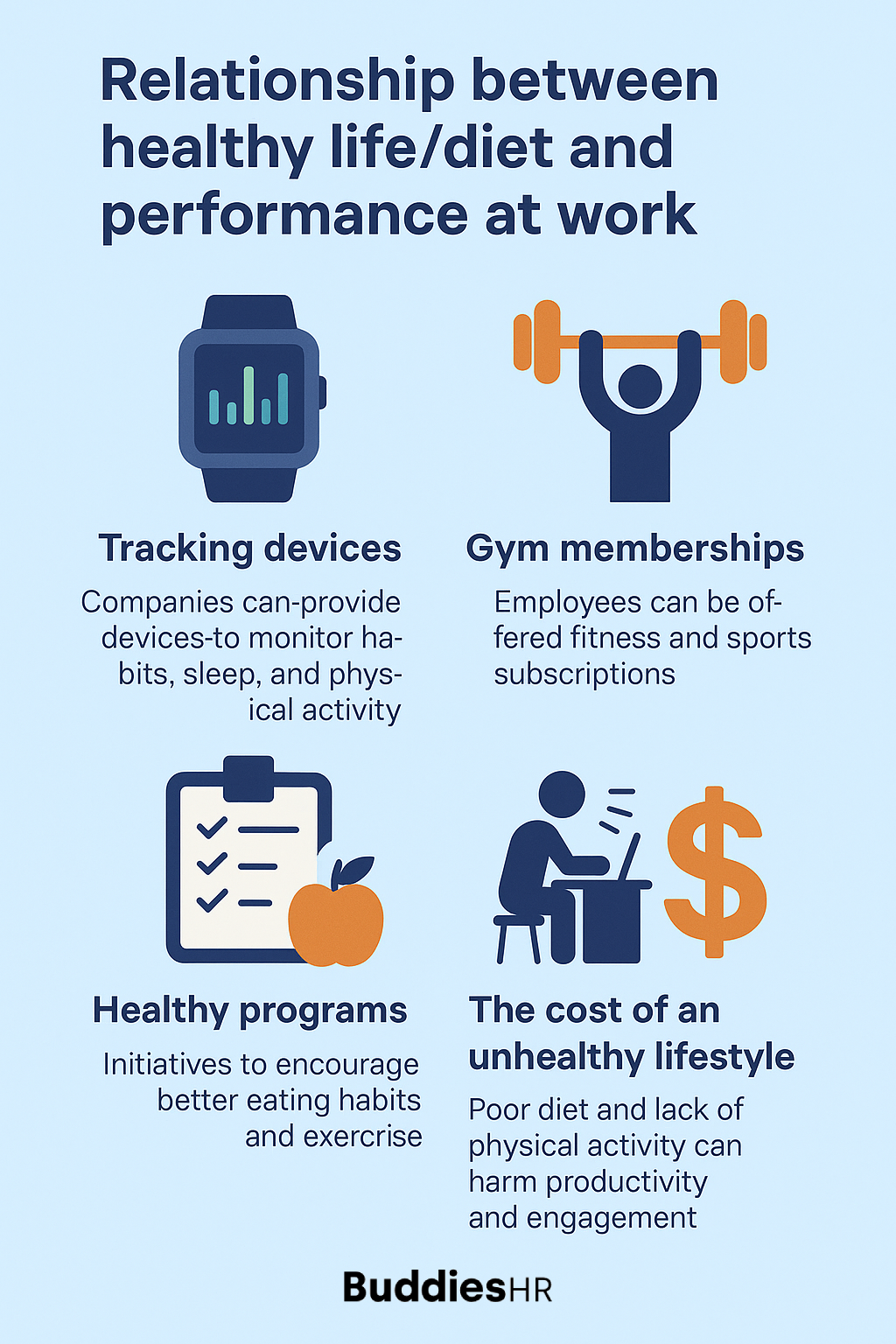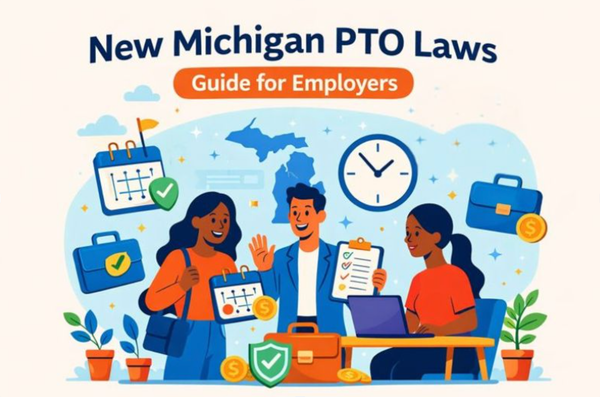How a healthy lifestyle boosts employee performance at work
Healthy employees are productive employees. Learn how diet, sleep, exercise, and wellness perks can drive performance and reduce burnout at work.

Why companies should care about what happens outside the office
When we think about workplace performance, we usually focus on what happens from 9 to 5: meetings, deadlines, deliverables. But what employees do outside of work has just as much impact on their productivity as anything that happens at their desks.
In short: a healthy life fuels better work. And companies that ignore this connection are leaving serious performance potential (and profits) on the table.

The hidden cost of unhealthy lifestyles at work
Unhealthy habits — poor diet, lack of movement, chronic stress, and insufficient sleep, don’t just hurt individuals. They directly affect companies through:
- Higher absenteeism
- Lower energy and concentration
- More frequent burnout and disengagement
- Increased healthcare costs
One study found that employees with unhealthy lifestyles are 66% more likely to experience productivity loss. That’s not a small impact. That’s a drain on your bottom line.
Healthy people work better
The benefits of a healthy lifestyle aren’t just about long-term wellness. They show up immediately in better mood, clearer thinking, stronger focus, and higher energy.
When employees eat well, move regularly, sleep enough, and stay hydrated, they:
- Make faster, better decisions
- Are more creative and resilient
- Collaborate better and handle stress
- Miss fewer days of work
A salad can’t solve every business problem. But it’s a great start.
Give your team the tools to build better habits
You can’t force anyone to live healthy. But you can make it easier, and more attractive, for them to make good choices.
Some smart ways companies are supporting employees:
1. Provide tracking tools
Wearables like Oura Rings, WHOOP, or Fitbit can help employees monitor their:
- Sleep
- Heart rate variability (HRV)
- Recovery
- Movement and calories
- Stress levels
Even better, these devices can create a sense of accountability and motivation. When someone sees their sleep score or recovery metrics, they’re more likely to make choices that support their health and their work.
2. Subsidize health-related perks
If you want employees to prioritize health, put your money where your values are. Offer perks like:
- Gym or ClassPass memberships
- Mental health support or therapy sessions
- Nutritionist consultations
- Healthy snacks or meal vouchers
- Wellness stipends
- Company step or hydration challenges
These don’t just help employees, they send a clear message: we care about your well-being.
Leading by example
Culture starts at the top. If leaders are always skipping lunch, grinding through burnout, and bragging about 4 hours of sleep, employees will think that’s the norm.
On the other hand, when managers prioritize movement, eat well, and take time to recharge, it gives everyone permission to do the same. And that’s how healthy habits become part of company culture, not just a perk, but a priority.
Final thoughts: healthy people build healthy companies
Investing in employee health isn’t about micromanaging diets or counting steps. It’s about creating an environment where people can thrive physically, mentally, and professionally.
A healthy lifestyle isn’t separate from work performance. It fuels it.
So if you want your team to show up energized, focused, and ready to crush it, start by supporting their health. It might cost a little upfront, but the ROI is impossible to ignore.




